Winter has arrived and this is the time of the year most of the people especially children get a lot of diseases. Most common winter illness is known as the flu. Some children get flu from the changing weather. The hospitals and clinics are filled up with children mostly at this time of the year. We all do our best to protect the children from winter illnesses. Here are some basic information and a list of winter illnesses that children get every year. Knowing the common symptoms of the diseases and illnesses of the winter is necessary for everyone. You should know when your child needs to see a doctor. Here we are providing you with a list of winter illnesses and the prevention from these diseases.

Common childhood illnesses chart:
Common child diseases in winter:
1. Common cold:
A common cold is a viral infection marked by a runny nose or nasal congestion,
sore throat, cough, or a headache. Children may also have fevers early in the illness. It may seem like your child has one cold after another all winter.
Young children haven’t built up immunity to the more than 100 different cold viruses that are around. That’s why they can get as many as 8 to 10 colds each year before they turn 2 years old. The fevers are usually low grade. Colds are caused by many different types of virus and can occur year round, although they are most frequent in the winter months. It is a very common disease of winter.
The common cold is contagious also.
Prevention from cold:
• Properly cover your child while going out especially covers the ears and
chest.
• Give your children a warm cup of soup.
• If the cold stays for more than 4 days, take your child to the doctor
immediately.

2. Influenza:
Influenza outbreaks among children happen every year, usually between November and April. Because influenza viruses change often from year to year children don’t stay immune for very long. That’s why people can catch the flu more than once. The term “seasonal flu” is used for the influenza viruses that spread every year. It is also a common childhood disease children get every year.
Influenza is contagious.
Symptoms:
The flu strikes more quickly than a cold and makes people feel worse. Children with colds usually have the energy to play and keep up their daily routines.
Children with influenza are usually in bed. The typical influenza symptoms are
as follows:
• sudden fever,
• chills and shakes,
• a headache,
• muscle aches,
• extreme fatigue,
• a dry cough and sore throat and,
• Loss of appetite.
Preventions:
• Keep your child as comfortable as possible. Offer plenty of fluids and small,
nutritious meals.
• If he has a fever, dress him in lightweight clothing and keep the room
temperature around 20°C.
• Gargling with warm water will ease a sore throat. For children 3 years or
older who can safely suck on hard candy without choking can use sugarless hard
candy containing honey, herbs or pectin. Throat lozenges containing medications
that numb the throat should not be used by young children because they can make
it hard for them to swallow.
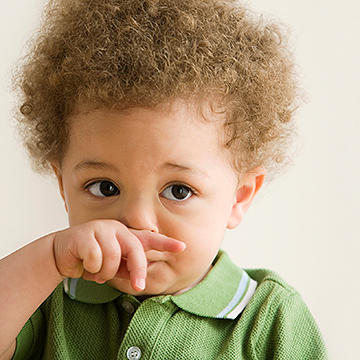
3. Dry skin:
Dry skin is a common condition and is often worse during the winter, when
environmental humidity is low. Moisturizing is essential during winter. Contrary
to popular belief, moisturizing lotions and creams aren't absorbed by the skin.
Instead, they act as a sealant to stop the skin's natural moisture evaporating away. The best time to apply moisturizer is after a bath or shower while your
skin is still moist, and again at bedtime.
 Top tip:
Top tip: Have warm, rather than hot, showers. Water that is too hot makes skin
feel more dry and itchy.
Diseases caused by cold temperature:
1. Asthma:
Asthma is ongoing chronic inflammation of airways in the lungs. This inflammation makes the airways vulnerable to episodes of difficulty breathing
(asthma attacks). Common triggers include allergies, colds and exercise. Asthma
is managed by controlling inflammation with drugs, avoiding triggers when
possible and using medications to treat asthma attacks.
Symptoms:
Common asthma signs and symptoms in children under 5 include:
• Cough
• Wheezing, a high-pitched, whistle-like sound when exhaling
• Trouble breathing or shortness of breath
• A tight, uncomfortable feeling in the chest
The severity and patterns of symptoms may vary:
• Worsening of symptoms at night
• Short periods of coughing and wheezing between periods of time with no
symptoms
• Frequent or chronic symptoms with episodes of worse wheezing and coughing
• Seasonal changes based on prevalent infections or allergy triggers
Prevention:
The prevention goals for young children with asthma are to:
• Treat inflammation in the airways, usually with daily medication, to prevent
asthma attacks
• Use short-acting drugs to treat asthma attacks
• Avoid or minimize the effect of asthma triggers
• Maintain normal activity levels
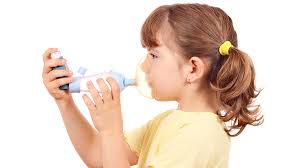
2. Cold feet and hands:
Meningitis is a disease which has a higher risk among children, especially during winters. The first symptoms are usually fever, vomiting, headache and feeling unwell. Limb pain, pale skin, and cold hands and feet often appear earlier than the rash, neck stiffness, dislike of bright lights and confusion.
Preventions:
• Don't wait for the rash as it doesn't always appear
• Not everyone gets all of these symptoms
• Symptoms can appear in any order
• Septicemia can occur with or without meningitis.
• You know your child best; check on them often, trust your instincts and act
fast
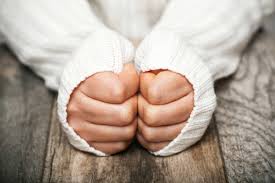
3. Ear infection:
Symptoms: Ear pain, Blocked Ears, Itchy Ears.
Causes: Excessive cold may result into an acute ear infection. Another cause of bacterial ear infection is due to moisture in the ear. An ear infection can
occur even overnight, so it is best to identify it at the earliest.
Precautions: Treat the cold immediately before it hampers the lungs, ears and
sinusitis. After a swimming session, shower or beach trip, make sure your
child's ears are clean and dry.
Treatment: Consult a doctor.
Illness caused by extreme cold:
1. Croup:
Croup often comes on suddenly in the middle of the night. You may wake up to your child coughing loudly. A croup cough often is described as “barking” or
“like a seal”. Your child may also be making a high-pitched noise while breathing, physicians call this strider. Children with mild and moderate coughs can often be supported at home. Frequently, croup symptoms will improve with exposure to cool dry air (bundle your child up and take them outside) or hot humid air (steam up the bathroom). For children with moderate to a severe cough or trouble breathing, croup often leads to a middle of the night ER visit. Luckily,
croup can usually be easily treated in the ER with nebulizer treatments and
steroids.

2. Painful joints in children:
Many people suffer joints and muscular pains during winters. Painful joints and muscles sometimes occur among the children due to extreme cold. It is not a very good sign. Children with painful joints during winters are less active and mostly found inside the bed. Many children get a little depressed during the winter months, and this can make them perceive pain more acutely. Everything
feels worse, including medical conditions.
You should make your child do exercise daily during winters to avoid this
extreme cold disease.
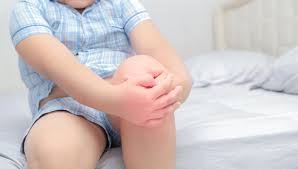
3. Strep Throat
Strep is most often seen in school-aged children. Children frequently present with a sore throat, headache, and stomachache. Some children will get high fevers or vomit. Strep throat does not cause cold symptoms or coughing. It can usually be easily treated with antibiotics, and children with strep throat should be
treated to help prevent later complications from this infection. Children should
stay home from school and other activities until after they have been on
antibiotics for 24 hours.
Keeping kids healthy and out of the doctor’s office can be a challenge in the winter months. Teach your children good hand hygiene and how to cover their mouths (with their elbow) with coughing or sneezing. If you have a young infant at home, try to avoid crowded areas or visiting with people who are known to be
ill. If your child is sick, please keep them home from school or daycare so you don’t spread the illness to other children or staff members. In general, your
child can return to school once their fever has been gone for 24 hours (with no
Tylenol or Ibuprofen needed) and when symptoms are otherwise improving.
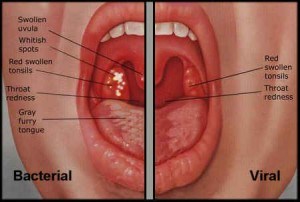
4. Stomach flu:
Symptoms: Abdominal pain, diarrhea, excessive flatulence, vomiting, and fever.
Causes: Infected water and food and unclean hands. Your child is highly
infectious for as long as she has diarrhea, and the virus can live in her stool
for several weeks after that.
Precautions: Be careful of where your child is eating. Also, make sure the
child's hand is washed well before he eats.
Treatment: Consult a doctor. Make sure the child is well hydrated with a lot of
liquids.
Its winter, which brings, along with the cold weather, the onset of some dreaded childhood winter illnesses. It can be hard to figure out exactly which one your child may have because the most common winter conditions share many symptoms.
We've outlined them all to help you quickly determine the one most likely
affecting your child. Please note that this information is not meant to make a
definitive diagnosis; you should always consult your paediatrician with questions
about your child's health.